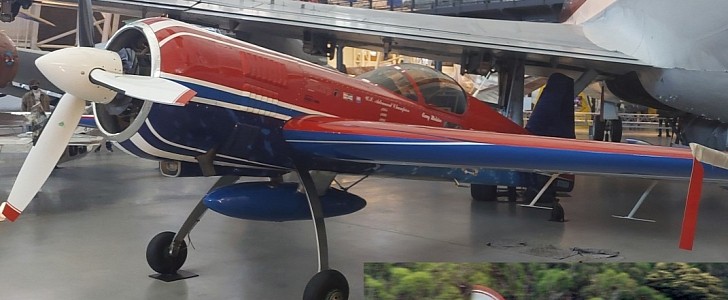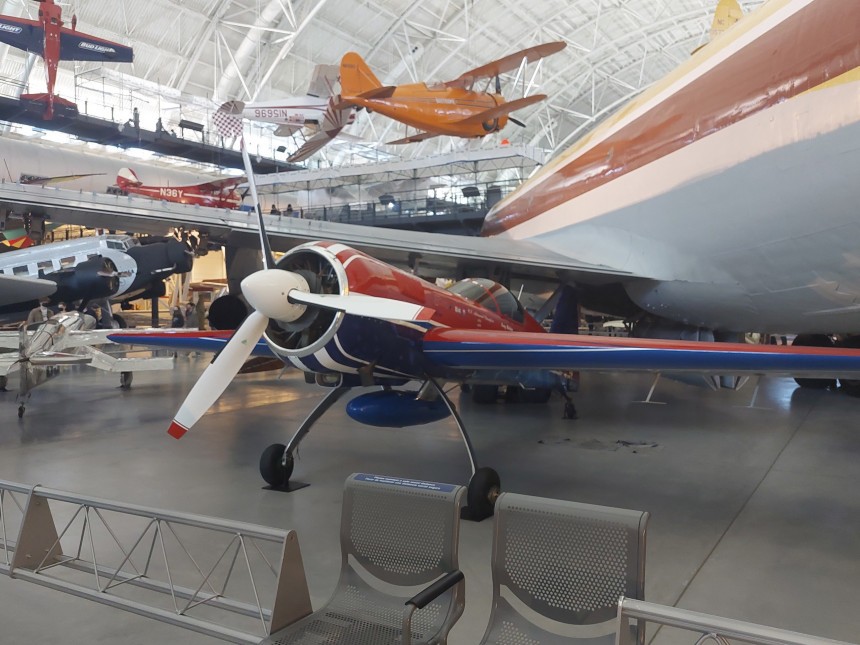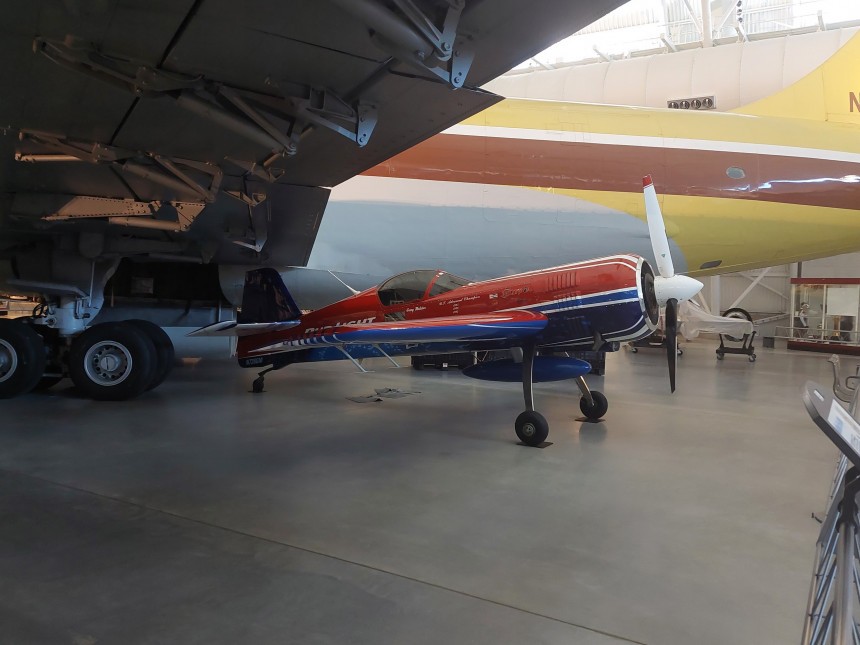When most people think of the Sukhoi Design Bureau, they think of a company that builds the latest and greatest in military jet technology. A company laser-focused on designing military planes better and more durably than their western counterparts.
But even the Russians need a break from the relentless pace of military development and cut loose. When this occurs, you get spectacular acrobatic planes like the Su-26. No, it's not a jet, and no, it doesn't come with anti-western missiles. Its only purpose was to be better at performing aerial stunts than anything built outside of Russia.
At the same time the Sukhoi Su-17 attacker and Su-27 fighters were duking it out in skies across the globe, Sukhoi began to formalize plans for a special aerobatic aircraft more maneuverable and agile than any military jet. It was to be powered by a single gasoline-operated radial engine and have a top speed no greater than 350 kph (217 mph).
The plane's wings and fuselage were honed from more than 50% composite materials, with the rest consisting of high-strength steel and aluminum alloys. The airframe was designed to withstand G-forces ranging from -10 to over 12 times the force of gravity. The landing gear is a unique cantilever style and made from titanium, as is the steerable rear landing gear.
These are maneuvering forces that would rip the wings clean off most other aircraft of its size. The Vedenyev nine-cylinder radial engine jetted 360 horsepower in its Su-26 configuration. In an airframe that weighed less than 1000 kilograms with a man in the cockpit, that's more than enough grunt.
It was enough to power to propel the aircraft through awe-inspiring gyroscopic maneuvers and quick, sudden snap rolls and brief periods of hovering in place in the sky on sheer engine power alone. The Su-26 made its first flight in June 1984, with its entry into global aerobatic competitions beginning soon after.
Modifications over time included refined and upgraded tail surfaces and a new MTV-9 triple bladed propeller to chop through as much air as possible as the aircraft flew at high speeds. By 1986, the aircraft had captured first place at that year's World Aerobatics Championship in both the men's and women's divisions. The upgraded Su-26M3 captured a further two world titles and one European title in the early 2000s.
This particular example is on display among a slew of other aerobatic and experimental aircraft at the Steven F. Udvar-Hazy Center, the official annex of the Smithsonian Air and Space Museum in Chantilly, Virginia. This example was manufactured not in the mid-80s but early 1990s and was originally painted in a color referred to as "Russian purple," which was similar in shade to hot pink with the number 22 on the fuselage behind the cockpit.
The aircraft competed in 222 flights with the Soviet National Aerobatic team. It performed admirably in the role until American aerobatic pilot Gerry Molidor purchased it in 1998. He flew the aircraft in sanctioned competition in the advanced and unlimited disciplines until the plane's retirement in 2001.
The craft is still in the same paint scheme and decal set that Molidor had placed on the airframe back in 1998. Official Smithsonian research claims the paint job took nearly 1,500 man-hours to complete. After Molidor's retirement, the aircraft was sold to the Anheuser-Bush Brewing Company before its formal donation to the Smithsonian Institution in 2003.
It's been a mainstay of the museum ever since. It's safe to say that the plane does just as nice of a job being a museum piece as it was an acrobatic aircraft. Check back for more from our trip to the Steven Udvar-Hazy Center right here on autoevolution.
At the same time the Sukhoi Su-17 attacker and Su-27 fighters were duking it out in skies across the globe, Sukhoi began to formalize plans for a special aerobatic aircraft more maneuverable and agile than any military jet. It was to be powered by a single gasoline-operated radial engine and have a top speed no greater than 350 kph (217 mph).
The plane's wings and fuselage were honed from more than 50% composite materials, with the rest consisting of high-strength steel and aluminum alloys. The airframe was designed to withstand G-forces ranging from -10 to over 12 times the force of gravity. The landing gear is a unique cantilever style and made from titanium, as is the steerable rear landing gear.
These are maneuvering forces that would rip the wings clean off most other aircraft of its size. The Vedenyev nine-cylinder radial engine jetted 360 horsepower in its Su-26 configuration. In an airframe that weighed less than 1000 kilograms with a man in the cockpit, that's more than enough grunt.
Modifications over time included refined and upgraded tail surfaces and a new MTV-9 triple bladed propeller to chop through as much air as possible as the aircraft flew at high speeds. By 1986, the aircraft had captured first place at that year's World Aerobatics Championship in both the men's and women's divisions. The upgraded Su-26M3 captured a further two world titles and one European title in the early 2000s.
This particular example is on display among a slew of other aerobatic and experimental aircraft at the Steven F. Udvar-Hazy Center, the official annex of the Smithsonian Air and Space Museum in Chantilly, Virginia. This example was manufactured not in the mid-80s but early 1990s and was originally painted in a color referred to as "Russian purple," which was similar in shade to hot pink with the number 22 on the fuselage behind the cockpit.
The craft is still in the same paint scheme and decal set that Molidor had placed on the airframe back in 1998. Official Smithsonian research claims the paint job took nearly 1,500 man-hours to complete. After Molidor's retirement, the aircraft was sold to the Anheuser-Bush Brewing Company before its formal donation to the Smithsonian Institution in 2003.
It's been a mainstay of the museum ever since. It's safe to say that the plane does just as nice of a job being a museum piece as it was an acrobatic aircraft. Check back for more from our trip to the Steven Udvar-Hazy Center right here on autoevolution.









